Are you familiar with the USS Jellyfish?
How about the MoonMoon?
If you haven’t, you’ve come to the right place.
Since the early days of space exploration, there has been an overwhelming public interest in understanding the untold secrets of the universe. That being said, space is strange, and so are we. Not only have we discovered peculiar natural wonders soaring through space, but we’ve also left our very own distinct imprint on the universe. But the universe is much more bizarre than we give it credit for.
Here are the 25 Strangest Things Scientists Have Discovered In Space.
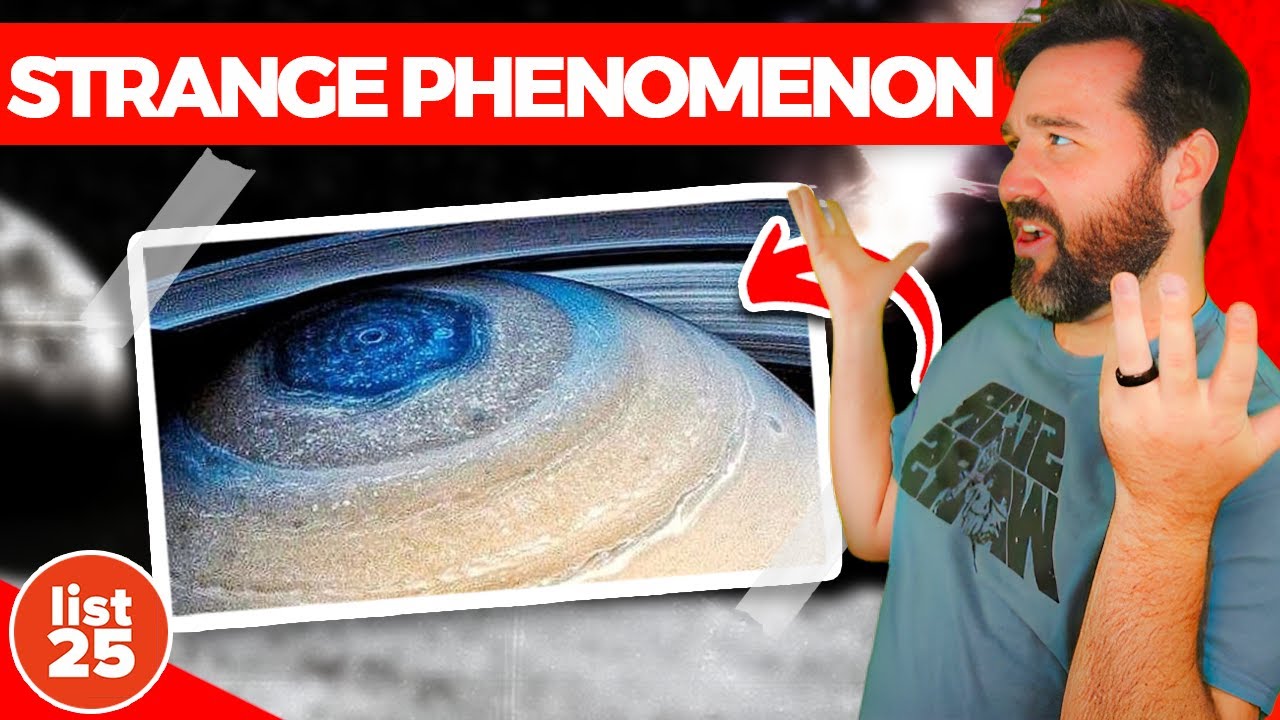
The Hell Planet
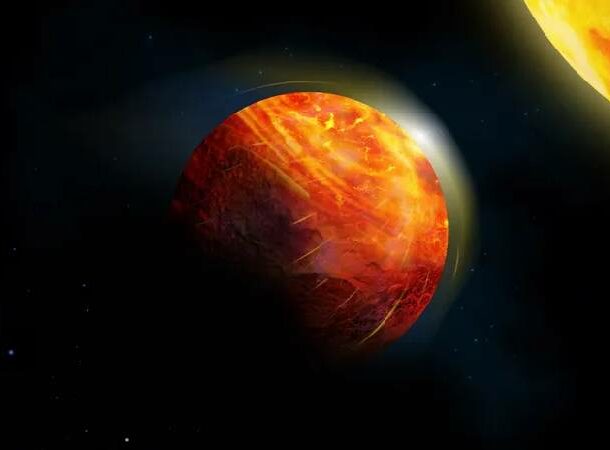 https://www.usatoday.com/story/news/nation/2020/11/06/k-2141-b-planet-magma-oceans-rock-rain/6185276002/
https://www.usatoday.com/story/news/nation/2020/11/06/k-2141-b-planet-magma-oceans-rock-rain/6185276002/ Scientists recently discovered a dreadful, uninhabitable “hell planet” flying through space. And, before you say, “Duh, we live here,” let me elucidate: They found an actual hell planet – and I am so glad we don’t have to live there.
Astronomers discovered K2-141b, fondly called a “lava planet” – roughly 200 light-years away. While we may have our own issues here on Earth, this planet rains rocks, has a gigantic 60-mile-deep lava sea, and winds that obliterate everything at over four times the speed of sound.
Because of how the planet orbits its sun, one side has permanent daylight and temperatures as high as 5,432 degrees Fahrenheit, while the other side is in endless darkness and comes with temperatures as low as -328 degrees.
The Planet That Never Was
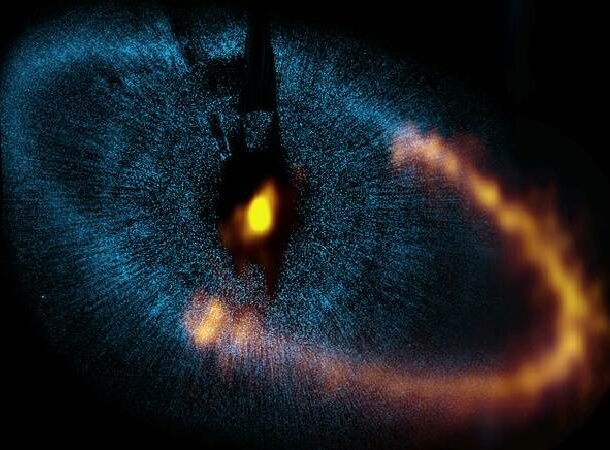 https://www.inverse.com/science/fomalhaut-b
https://www.inverse.com/science/fomalhaut-b In 2008, scientists revealed the discovery of the first exoplanet visible to the naked eye. Fomalhaut b was picked up in images taken by the Hubble Space Telescope. However, by 2012, the planet simply disappeared.
By 2020, research published in PNAS (Proceedings of the National Academy of Sciences) suggested that what astronomers believed to be a planet was only a collision a few light years away from Earth.
The team behind the new study returned to the old Hubble images, looked at them with fresh eyes, and concluded that the astronauts merely observed the massive dust cloud formed by the collision of two massive space bodies made of dust and ice. So, as it turns out, Formalhaut b never existed in the first place.
The Whirlpool Galaxy
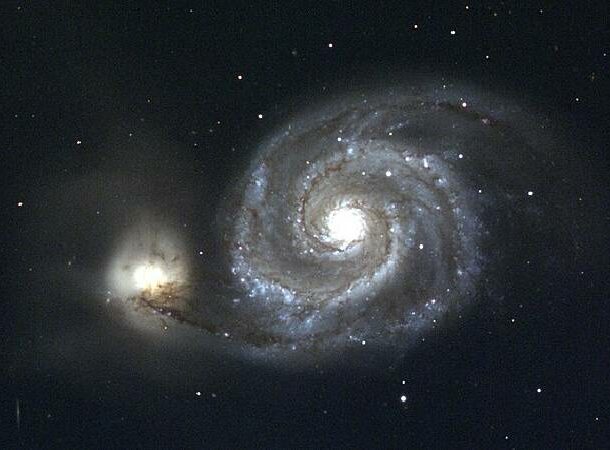 https://sci.esa.int/web/hubble/-/37004-the-whirlpool-galaxy-m51-and-companion-galaxy-ngc-5195
https://sci.esa.int/web/hubble/-/37004-the-whirlpool-galaxy-m51-and-companion-galaxy-ngc-5195 If there’s one heavenly body we’ve all seen, it’s this one. The Whirlpool Galaxy, or Messier 51, is one of the most photographed celestial masses out there. It can be found in Canes Venatici, 23 million light years away.
Apart from the fantastic visuals, what makes it intriguing is its cosmic dance with its companion galaxy – NGC 5195. The gravitational interplay between these two causes intense star formation, which is basically what you glimpse in its spiral arms – stars being born.
The Martian Spoon
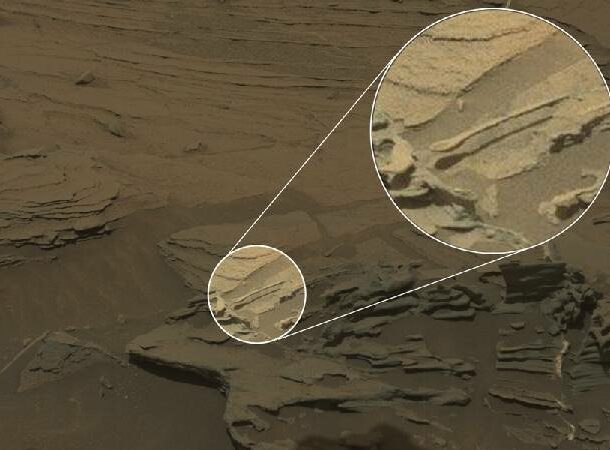 https://www.space.com/30454-floating-spoon-on-mars-weird-rock-photo.html
https://www.space.com/30454-floating-spoon-on-mars-weird-rock-photo.html The internet went bonkers when NASA’s Curiosity rover discovered a “floating spoon” on Mars in 2015. As wild theories made their way to our screens, scientists quickly pointed out that it was nothing more than a cool rock sculpted over time by the Martian winds.
And how!
In the Curiosity photo, a rock in the shape of a handle juts out from an outcropping and ends with a rounded tip that looks just like that of a spoon. Its shadow even played along, casting a spoon-shaped shadow on the ground below.
Saturn’s Hexagon
 https://science.nasa.gov/mission/cassini/science/saturn/hexagon-in-motion/
https://science.nasa.gov/mission/cassini/science/saturn/hexagon-in-motion/ Saturn’s hexagon, perhaps the most incredible and mysterious vortex in the universe, never fails to awe people. This massive storm, big enough to encompass four Earths and needing over ten hours to rotate, has been around (and ongoing) for hundreds of years. It’s incredible!
The storm is located in Saturn’s atmosphere, where the velocity of the atmospheric winds fluctuates dramatically. Saturn’s hexagon emerged from an area of turbulent air, trapped between two whirling masses of wind rotating around the planet at different speeds. The vortex at Saturn’s north pole (and inside the hexagon) rotates faster than the winds beyond the hexagon, resulting in this amazing storm formation.
The MoonMoon
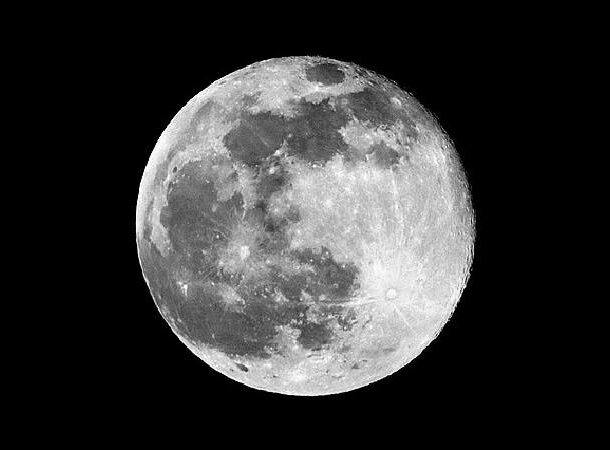 https://www.livescience.com/63819-moonmoons-could-exist.html
https://www.livescience.com/63819-moonmoons-could-exist.html What could be better than the moon? The answer to that question is a MoonMoon.
Some moons, according to scientists, have their own moons. Oh boy, I can already see the “mooning” jokes this will cause.
The smaller moons orbit the larger moons, which, in turn, travel around the planets. Scientists are already brainstorming names for the smaller moons because they are afraid of being caught off guard when they eventually discover one. “Submoon” and “moonmoon” are two strong contenders.
We here at List 25 think “MoonMoon” sounds better, so that is what we’ll use going forward.
The Traveller - Oumuamua
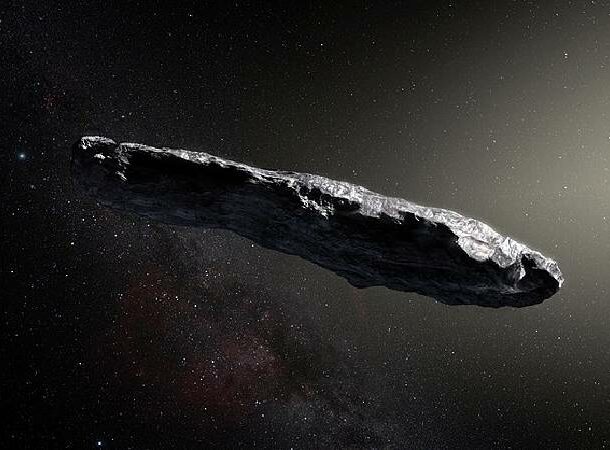 https://science.nasa.gov/solar-system/comets/oumuamua/
https://science.nasa.gov/solar-system/comets/oumuamua/ On October 19, 2017, the University of Hawaii’s Pan-STARRS1 telescope discovered an object that completely defied explanation.
It was initially believed to be a comet. But since it didn’t exhibit any comet-like behavior, it was reclassified as an asteroid. However, that didn’t make any sense either. The cosmic object was cylindrical and long and moved like no asteroid would. It was also getting brighter as it rotated – something never observed before.
So, what exactly was it?
Well, it was a space rock – a space rock from outside our solar system. One that originated from outside our solar system before our solar system even existed. Meaning we’ll probably never know where it came from. It was given a fitting name: Ohmuamua, a Hawaiian term that means “a messenger from afar arriving first.”
The USS Jellyfish
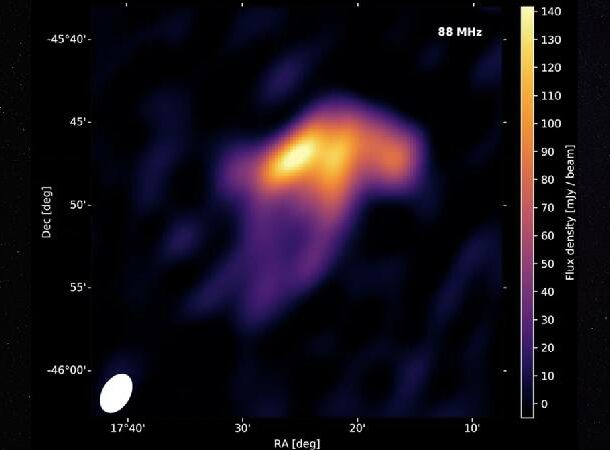 https://www.popularmechanics.com/space/deep-space/a36061664/space-jellyfish/
https://www.popularmechanics.com/space/deep-space/a36061664/space-jellyfish/ Extraterrestrial jellyfish may sound like a plot line straight out of a terrible science fiction movie. However, scientists recently discovered a massive tentacled body spreading across the cosmos, which has left them bewildered.
The USS jellyfish is a strange collection of charged particles that stretches over a million light-years. The obscure giant has been described as the first known polyphoenix – an incomprehensible and complex expanse of space that produces radio waves. Astronomers claim they’ve never seen anything like it before.
The Oort Cloud
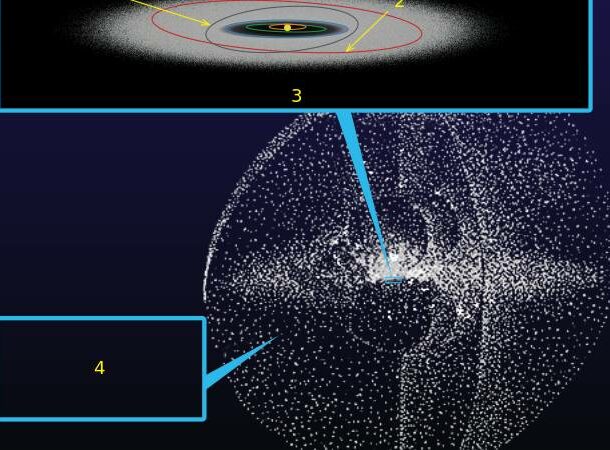 https://science.nasa.gov/solar-system/oort-cloud/facts/
https://science.nasa.gov/solar-system/oort-cloud/facts/ Comets are our solar system’s space nomads, coming from beyond the planetary borders of Neptune and Pluto in what is known as the Oort cloud. They then loop back out in giant, elliptical orbits while they approach the Sun. The Oort cloud holds hundreds of billions of icy bodies that could become comets if they could only find their way to the Sun.
In August 2013, one of the comets finally made it and completed a kamikaze death drop straight into the Sun. Usually, such an event would go unnoticed by astronomers. However, this one was recorded by the Solar and Heliospheric Observatory spacecraft, which monitors the Sun, its corona, and solar wind. The SOHO captured the comet’s final moments as it met the Sun, never to be seen again.
Stephan's Quintet of Galaxies
 https://en.wikipedia.org/wiki/Stephan's_Quintet
https://en.wikipedia.org/wiki/Stephan's_Quintet The five galaxies that comprise Stephan’s quintet were the first compact group ever discovered. However, at the time of the discovery, everyone thought they were nothing but clouds of gas in the Milky Way. As our telescopes improved, astronomers eventually realized what they were looking at – but it came with a mystery. A sensational mystery.
It involved Redshift – the change in wavelengths of light that tells us how far a galaxy is from us. The galaxies in Stephan’s quintet seem as if they are physically connected. In fact, it even looks as if soft space tendrils are holding them together. Almost as if they are interlocked. So their Redshifts should be the same.
However, according to the data, 4 of them are 300 million lightyears away, while the other is a mere 30 million lightyears away. This difference was not merely technical; it was massive. If two galaxies at the same distance have very different Redshifts, then Redshift cannot be used to predict distance anymore.
The Jack-O'-Lantern Face In The Sun
 https://www.nasa.gov/image-article/nasa-sdo-image-jack-o-lantern-sun/#:~:text=They are markers of an,a particularly Halloween-like appearance
https://www.nasa.gov/image-article/nasa-sdo-image-jack-o-lantern-sun/#:~:text=They are markers of an,a particularly Halloween-like appearance A couple of years ago, NASA’s Solar Dynamics Observatory shared a grinning image of a solar jack-o-lantern on Instagram on the 31st of October. While they must have loved the opportunity to share our sun’s friendly face, it was actually an educational post, too.
NASA shared that the active areas were, in fact, markers of an extreme and intricate collection of magnetic fields drifting in the sun’s atmosphere, the corona.
The Solar Starship Enterprise
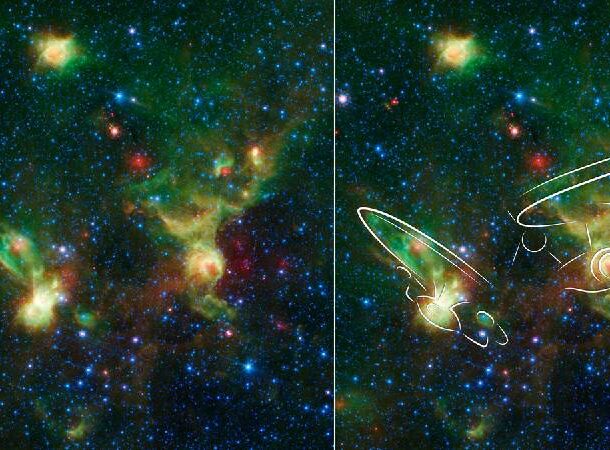 https://www.jpl.nasa.gov/news/enterprise-nebulae-seen-by-spitzer
https://www.jpl.nasa.gov/news/enterprise-nebulae-seen-by-spitzer Two years after NASA released the stunning Jack-O’-Lantern face in the sun, they shared this stunning image of two nebulas – or star-birth regions, captured by NASA’s Spitzer Space Telescope.
The scientists obviously have an eye for detail, as they somehow managed to identify space matter that clearly resembled the Starship Enterprise. To prove that these guys are the ultimate nerds, they released it on September 8, which was, in fact, the 50th anniversary of “Star Trek.”
If liked the last two entries, stick around for number one on today’s list, you’re going to LOVE it! Trust me.
Pluto’s Slug
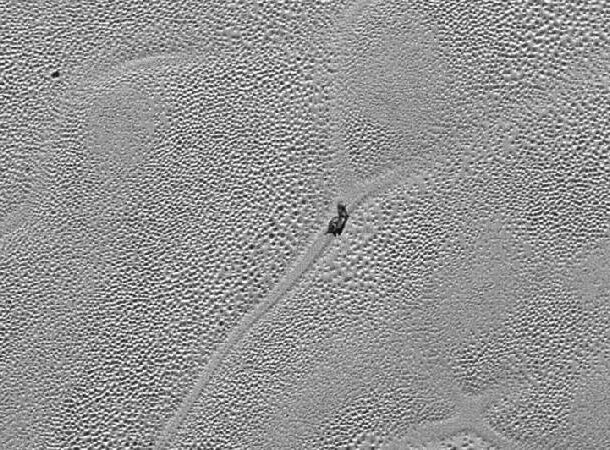 https://www.upi.com/Science_News/2016/01/11/Pluto-image-reveals-strange-slug-like-object/9451452521486/
https://www.upi.com/Science_News/2016/01/11/Pluto-image-reveals-strange-slug-like-object/9451452521486/ Pluto’s landscape is impressive. Unlike here on Earth, the surface of its icy plain, Sputnik Planum, is constantly moving. Just imagine icebergs on the ocean, and you’ll have an accurate picture.
In 2016, NASA released an amusing picture of an exposed rock that looks just like a massive slug. This outcropping also happened to lie on the demarcation line between different surface areas of the plain; as such, the line looked just like the slime trail this rocky slug would have left behind.
The Hippo Asteroid
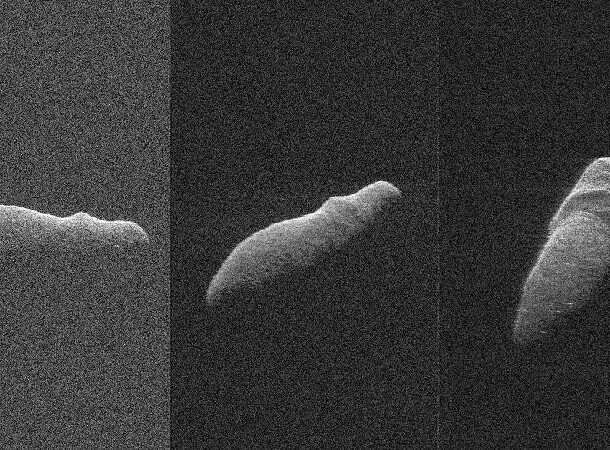 https://www.space.com/42838-hippo-asteroid-2003-sd220-earth-flyby.html
https://www.space.com/42838-hippo-asteroid-2003-sd220-earth-flyby.html In December 2018, a strange asteroid passed Earth on its way to deep space, and NASA couldn’t help but notice that the rock resembled a particular large African semiaquatic mammal.
The Space Hippo was about 1 mi (1.6km) long and pinged Earth at about 1.8 million mi (2.9 million kilometers). The event marked its closest approach in more than 400 years, and it is unlikely to get any closer to us again until 2070. There was never any danger of the asteroid coming into contact with our planet (and there won’t be any risk in the future). Still, the short distance did allow NASA to capture some exceptionally detailed photos of the celestial hippo.
Ultima Thule - The Snowman
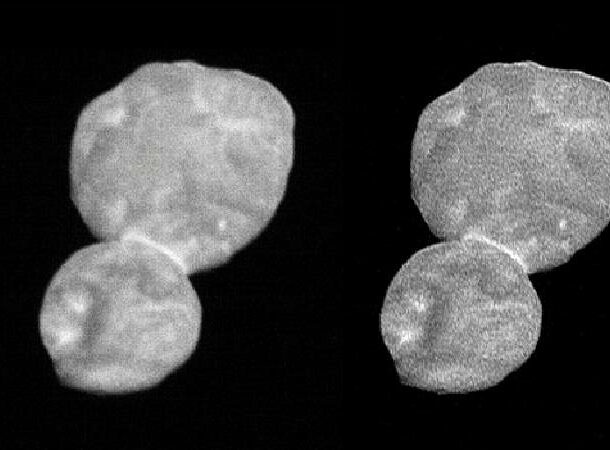 https://www.theguardian.com/science/2019/jan/02/first-close-ups-of-ultima-thule-reveal-it-resembles-dark-red-snowman
https://www.theguardian.com/science/2019/jan/02/first-close-ups-of-ultima-thule-reveal-it-resembles-dark-red-snowman Do you want to build a Snowman? According to our solar system, the answer is YES!
When a star forms, a disk of gas and dust is left behind. These tiny particles begin to clump together and become larger and larger. Should a cosmic body fly by, gravity pulls in other particles and objects, which leads to a cosmic snowball effect. These newly formed objects, or protoplanets, are known as Planetesimals.
Scientists have predicted their existence for decades, but we have never actually seen one. That all changed in 2019 when NASA’s New Horizons probe returned the images of Ultima Thule, the universe’s Snowman. Ultima Thule’s eccentric shape is attributed to moving ice and dust particles that came together thousands of years ago. It created two large lumps of rock, which eventually collided and decided to stick together.
The Space Butterfly
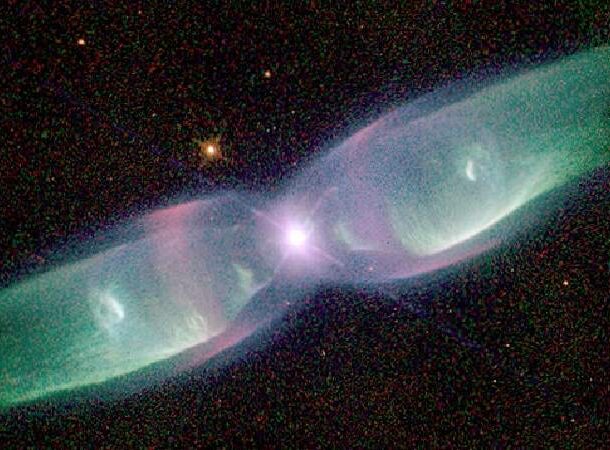 https://esahubble.org/news/heic1518/#:~:text=Within the wings%2C starting from,one million kilometres per hour
https://esahubble.org/news/heic1518/#:~:text=Within the wings%2C starting from,one million kilometres per hour Have you ever seen the Space Butterfly?
The beautiful images were captured by the Hubble Space Telescope. In addition to being called the Twin Jet Nebula, it also goes by the slightly less poetic name of PN M2-9. But I prefer Space Butterfly; I mean, just look at it!
PN M2-9 is a bipolar planetary nebula, meaning its binary star system contains two stars instead of one.
The radiant shells in the photograph show the final light of a dying star after its outer layers have been ejected. Astronomers discovered that the two stars in the Twin Jet Nebula have roughly the same mass as the Sun. While the larger star is getting closer to the end of its life, its smaller partner is a highly evolved small white dwarf.
Space’s Bermuda Triangle
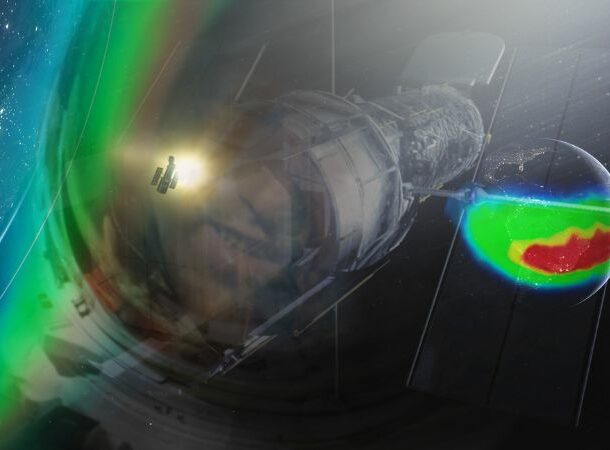 https://www.space.com/bermuda-triangle-in-space.html
https://www.space.com/bermuda-triangle-in-space.html The Earth is an enormous magnet. Its magnetic field safeguards the planet’s atmosphere – and human technology – from particles emitted by the sun. However, our protective bubble has a flaw. There is only one place on Earth where the sun’s harmful particles can enter our atmosphere and disrupt expensive equipment. It is called the South Atlantic Anomaly (SAA).
The SAA extends across South America and the Southern Atlantic Sea. Any space station or equipment passing through this region risks losing data or sustaining hardware damage. As a result, NASA frequently turns off satellites that pass by the SAA until they are back underneath the metaphorical magnetic umbrella. Although nothing magically disappears from this area, it poses a significant risk for astronauts and space equipment.
Planet 9 (and 10)
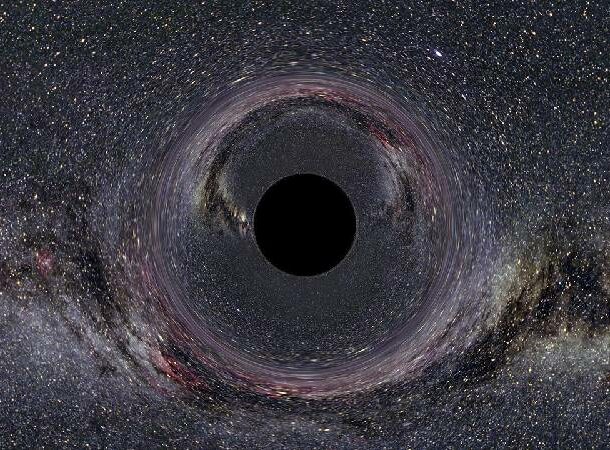 https://www.science.org/content/article/planet-nine-may-actually-be-black-hole
https://www.science.org/content/article/planet-nine-may-actually-be-black-hole In 2017, a team of Caltech researchers released data suggesting that our solar system may contain a ninth planet. Planet Nine, a ten-times-the-size-of-Earth world, is believed to orbit the solar system’s outermost reaches far beyond the frozen wastelands of the Kuiper Belt. By 2019, they also revealed that they may have discovered Planet Ten. And this colossus could be circling the Kuiper Belt itself. The unusual movements of objects in the Kuiper Belt actually support their theory.
Even taking the Planet Nine theory into account, some of the Belt’s objects have orbits that are about 8% off from what we’d expect. The most likely answer is a massive object with the mass of Mars, or in other words – a brand-new planet.
Saturn's Mystery Moon - Peggy
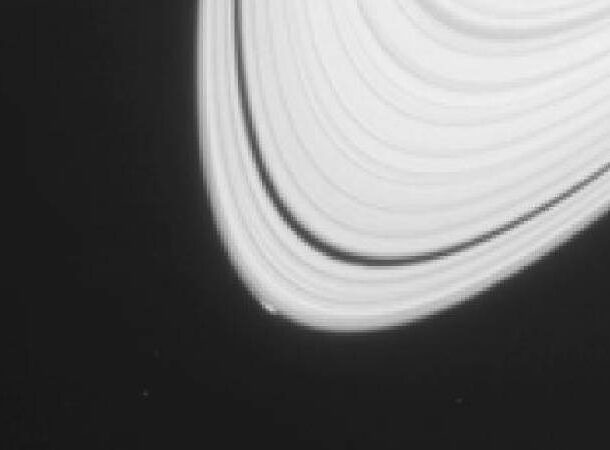 https://en.wikipedia.org/wiki/Peggy_(moonlet)
https://en.wikipedia.org/wiki/Peggy_(moonlet) We’ve shown you what it looks like when stars are dying and when they are born. But have you ever witnessed the birth of a new moon?
The Cassini spacecraft captured a lot of stunning and historic pictures of Saturn during its mission, and it added to that list when it discovered a new moon forming just outside Saturn’s rings. The new moon, named “Peggy,” is only about 0.5 mil (0.8 km) in size and seems to be forming on Saaturn’s outermost – or “A” ring.
Scientists believe these moons form when icy particles in the rings get pushed to the outer edges. Picture a drop of water that gets flung to the edge of a spinning disc and you’ll have a pretty good idea of what they’re witnessing firsthand.
The Alcohol-Spewing Comet
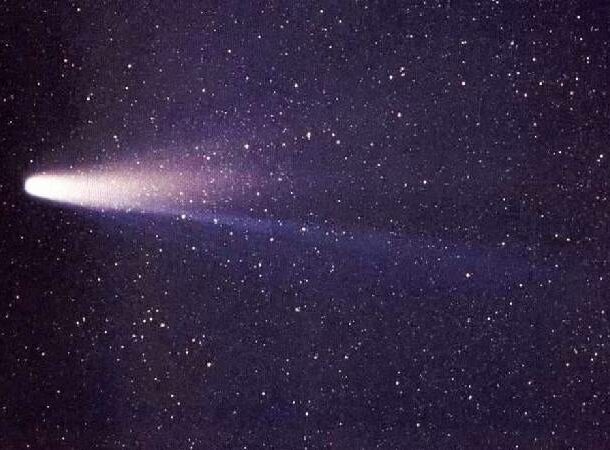 https://www.nasa.gov/solar-system/researchers-catch-comet-lovejoy-giving-away-alcohol/
https://www.nasa.gov/solar-system/researchers-catch-comet-lovejoy-giving-away-alcohol/ When astronomers first noticed the Lovejoy comet, everything seemed normal. You know, a snowball with a tail. The usual. One year later, in 2015, Lovejoy passed by the Sun, and the heat caused an unprecedented event. The comet began to spew ethyl alcohol. This is the same stuff that people order from a menu or store in a cellar. During the height of his inebriation, Lovejoy discharged the volume of 500 bottles of wine each second.
The tipsy comet lends credibility to the theory that all life on Earth was seeded by comets. Why? Lovejoy not only spewed alcohol but also copious amounts of sugar and organic molecules, which (when combined) form the building blocks of DNA.
Life Near Jupiter?
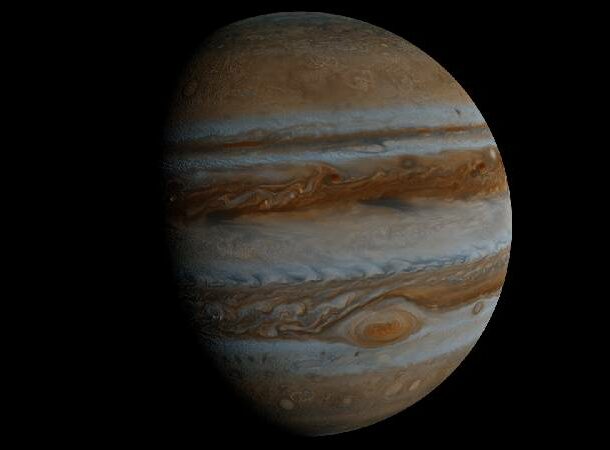 https://timesofindia.indiatimes.com/etimes/trending/nasa-finds-a-possible-sign-of-life-on-jupiters-moon/articleshow/104044526.cms?from=mdr
https://timesofindia.indiatimes.com/etimes/trending/nasa-finds-a-possible-sign-of-life-on-jupiters-moon/articleshow/104044526.cms?from=mdr In our search for life among the stars, Europa (one of the largest of Jupiter’s 90 moons) is one of the most promising candidates.
We’ve already confirmed the presence of vast oceans underneath its icy surface, and scientists believe that its bottom could contain warm geothermal vents. These vents could host thousands of life forms, just like the bottom of our oceans here on Earth.
Europa’s oceans – like Earth – are also believed to produce ten times more oxygen than hydrogen. This combination of chemical reactions from hydrothermal vents and the water’s oxygen makes scientists and astronomers extremely excited!
The Moon Mystery
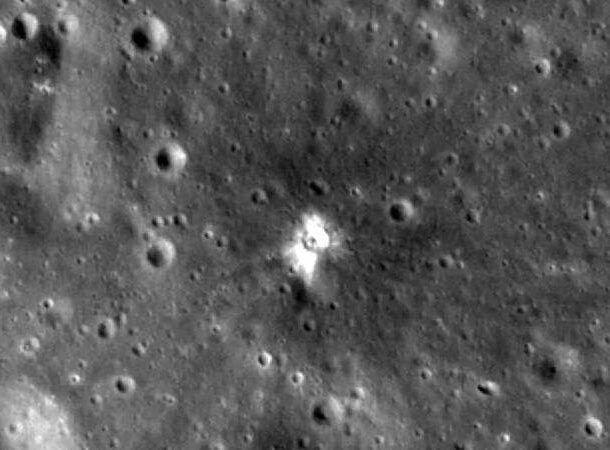 https://www.cnet.com/science/a-dead-rocket-crashed-into-the-moon-and-scientists-are-excited/
https://www.cnet.com/science/a-dead-rocket-crashed-into-the-moon-and-scientists-are-excited/ On March 4, 2022, a rocket crashed into the moon, forming a massive crater over 90 feet (or 27.4 meters) wide.
Rocket casualties – especially ones that cause them to crash into the moon and form new craters – are hardly anything new. Several NASA rockets have already met the same fate. However, the double-crater this mysterious rocket left behind is a unique sight for scientists, as no other rocket has left this kind of shape before.
NASA doesn’t know who launched the rocket or why. China already categorically denied that it was theirs.
What do you think? Let me know in the comments.
The CO2 Outside Our Solar System
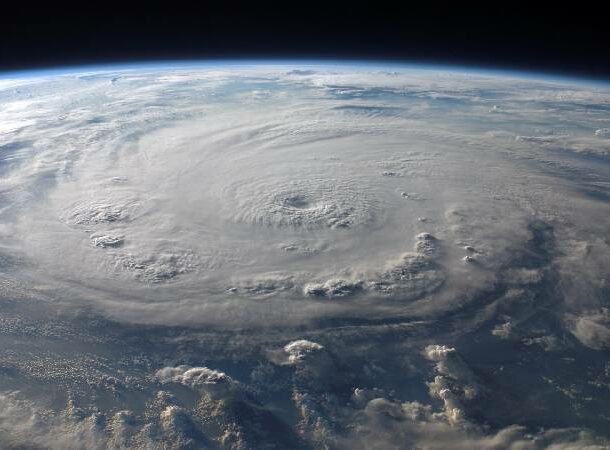 https://www.nasa.gov/universe/nasas-webb-detects-carbon-dioxide-in-exoplanet-atmosphere
https://www.nasa.gov/universe/nasas-webb-detects-carbon-dioxide-in-exoplanet-atmosphere One year ago, astronomers discovered CO2 – or carbon monoxide – in the skies above a Saturn-sized planet 700 light years away from Earth. This was the first time CO2 had been discovered outside our solar system. The James Webb Space Telescope found the planet, and also observed traces of methane, water vapor, and carbon monoxide around a few other planets, all of which are potential signs of life on exoplanets,
This demonstrates how impressively Webb can identify a planet’s suitability for life, even if it can’t confirm life itself.
The Water On The Moon
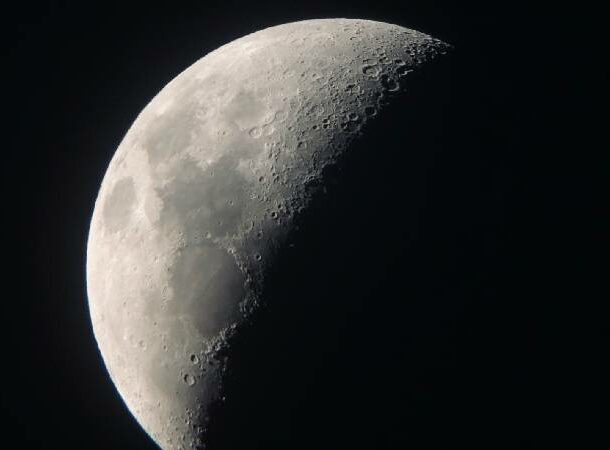 https://www.usatoday.com/story/tech/science/2023/04/20/is-water-on-moon/11621243002/
https://www.usatoday.com/story/tech/science/2023/04/20/is-water-on-moon/11621243002/ Ok, prepare to have your mind blown!
2009 was an excellent year for theater releases, as moviegoers were treated to Fantastic Mr Fox, Coraline, Harry Potter and the Half-Blood Prince, and a staggering number of other iconic theater releases. However, 2009 was also an iconic year for NASA, as that was when NASA’s Lunar Crater Observing and Sensing Satellite, or LCROSS for short, discovered water at the South Pole of the Moon in October.
NASA designed the probe to study and observe the lunar surface, while a tiny satellite accompanied it to analyze the chemical composition of lunar materials. After a year of data analysis, frozen water was confirmed to be on the moon. It was also discovered that a thin layer of water covered several areas of the soil’s surface. That’s just incredible!
The Centaur And Its Rings
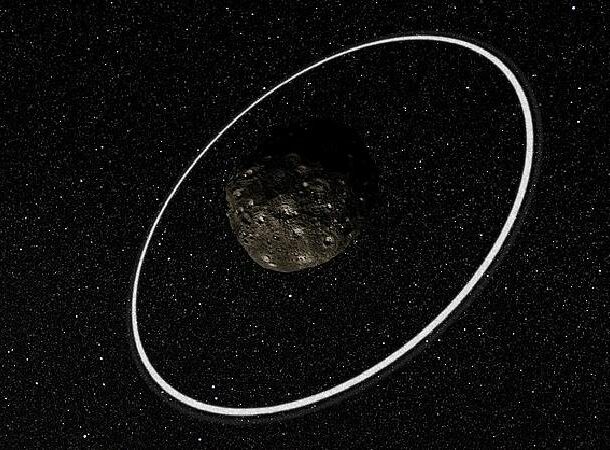 https://en.wikipedia.org/wiki/10199_Chariklo
https://en.wikipedia.org/wiki/10199_Chariklo Asteroids with Saturn envy are now decking themselves out with glittering rings. I kid you not! Astronomers discovered the first asteroid with its own ring system. Known as 10199 Chariklo, the asteroid has revealed that even small space bodies have unexpected possibilities.
Up to this point, rings have only been discovered around giant planets. Usually, the particles in rings spread out, making the edges smoother. However, the asteroid’s is sharp – meaning its rings must be shaped by something on an ongoing basis, most likely unseen “shepherd” satellites that travel close to the rings and keep the particles imprisoned. So, despite their very different origins, Chariklo’s rings at least appear to follow some common rules.



























